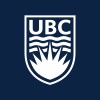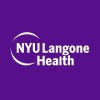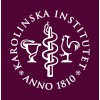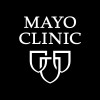
Evaluating Unilateral Deep Brain Stimulation in Patients With Obsessive Compulsive Disorder
Obsessive-Compulsive DisorderThe investigators previously showed that deep brain stimulation (DBS) in the bed nucleus of the stria terminalis (BNST) reduces symptoms in patients with severe obsessive-compulsive disorder (OCD). Although most patients now receive bilateral stimulation, multiple studies suggest that stimulation of the left BNST might be equally effective. In this study, the investigators will evaluate the effect of unilateral stimulation in OCD patients who currently receive bilateral BNST stimulation to treat their symptoms. We hypothesize that unilateral stimulation of the left BNST will reduce anxious and depressive symptoms, compared to no stimulation. The study entails a double-blinded, randomized cross-over design during which every patient undergoes four stimulation conditions: stimulation of the left, right or bilateral BNST, or no stimulation. During every condition, which takes about fifteen minutes, the patient is exposed to an individually determined stimulus that normally elicits OCD-related symptoms. The patients are then asked to fill out a short questionnaire to evaluate the severity of their symptoms during the four conditions. At the end of the cross-over phase, the stimulation parameters of each patient are restored.

SMART ERP for the Behavioral Treatment of Youth With Obsessive Compulsive Disorder (OCD)
Obsessive-Compulsive DisorderThis randomized pilot study examines a graduated behavioral treatment approach for youth with obsessive compulsive disorder. Youth will be randomized to receive treatment in the community or at the hospital. In the first stage, youth receive an intro session and two 3-hour ERP sessions. Youth will be assessed for OCD recovery. Recovered youth enter follow-up. Still affected youth enter the second stage, where they will can select to receive up to four additional ERP sessions (one per week). In follow-up, youth will receive three 30 minute weekly calls and will be reassessed at 1- and 6-months following treatment.

Alternative Treatment to Reduce Chronicity in OCD: Research Into Brain Response and Adequacy of...
Obsessive-Compulsive DisorderRationale: Obsessive-Compulsive Disorder (OCD) is a disabling neuropsychiatric disorder that often has a chronic disease course. The standard psychotherapeutic treatment Cognitive Behavioural Therapy (CBT) is unable to redeem about half of all patients and is rejected by many because of its anxiety provoking methods. A promising alternative is the Interference Based Approach (IBA), which appears to be as effective as CBT, and more effective for patients with poor insight. The current study will investigate the proposed IBA non-inferiority to CBT. Furthermore, the neurobiological working mechanisms of both treatments will be investigated. Both treatment modalities are expected to alter activity and connectivity in different functional brain networks. In order to lead the way towards personalized care for OCD patients, clinical and neurobiological predictors of response to treatment will be studied. The eventual aim of this study is to prevent the demoralizing effect of undergoing an ineffective treatment by future prediction of whether an individual patient will respond better to IBA or CBT. This also contributes to solving the costs and waiting times for CBT. Objective: To investigate non-inferiority of IBA compared to CBT and to unravel the neurobiological working mechanisms of both treatment modalities. Study design: Multicentre randomized controlled trial. Study population: 203 adults with a primary diagnosis of OCD and 43 healthy controls, matched on gender, age and educational level. Intervention: The 203 adults with the primary diagnosis of OCD will be divided into the experimental- (IBA) and control intervention (CBT). Healthy controls will not receive an intervention. Main study parameters/endpoints: Clinical measures (e.g. severity of OCD symptoms, disease insight), neurocognitive capabilities (performance on neuropsychological tests), neural correlates on brain structure (i.e. white matter integrity, grey matter volume) and brain function (i.e., activation and connectivity during resting state and symptom provocation) using 3 Tesla magnetic resonance imaging.

The Study of Mindfulness Based Cognitive Therapy and Obsessive-Compulsive Disorder
Obsessive-Compulsive DisorderThe primary objective of the study is to evaluate the clinical curative effect of MBCT to reduce obsessive and compulsive symptoms. Moreover, the investigators will also explore a MBCT manual for Chinese patients with OCD, which can be widely applied to the clinical practice. There are two parts of the study. The first part is a qualitative research with two pilot MBCT groups. The second part of this study is a single-blind randomized controlled trial with three study arms: one - third of participants receive group mindfulness-based cognitive therapy led by trained MBCT psychotherapists or psychiatrists in addition to medication, one - third of participants receive group psycho-education program and one - third of participants receive drug therapy as usual. All participants have 10 sessions intervention and assessments.

Effects of Ondansetron in Obsessive-compulsive and Tic Disorders
Obsessive-Compulsive DisorderTic Disorders1 moreThis project investigates the use of 4 weeks of 24 mg/day ondansetron as compared to placebo on symptoms and brain functioning in patients with obsessive-compulsive disorder (OCD) and tic disorders (TD). Patients will be randomized to receive ondansetron or placebo for 4 weeks, with MRI scans and symptom assessments occurring at baseline (before any drug) and at the end of the 4 weeks. Patients will also be asked to come into the lab approximately 2 weeks into the trial for symptom assessments. The investigators hypothesize that after 4 weeks there will be greater reduction from baseline in sensory symptoms and the activation of the insula and sensorimotor cortex compared for ondansetron as compared to placebo.

Effects of Marijuana on Symptoms of OCD
Obsessive-Compulsive DisorderThe purpose of this pilot research study is to test whether certain components of the marijuana plant, known as "cannabinoids", may help to reduce symptoms in patients with OCD. Specifically, patients enrolled in the study will smoke marijuana containing different concentrations of 2 different cannabinoids, THC and CBD. Both of these agents act on the brain's "endocannabinoid system," which has been hypothesized to play a role in OCD. Neither compound is currently FDA-approved for treating OCD.

An eHealth Intervention for Obsessive Compulsive Disorder in Youth With Autism Spectrum Disorder...
Obsessive-Compulsive DisorderThis study is a feasibility study of Internet-delivered CBT for OCD in children and adolescents (7-17 years) with comorbid Autism Spectrum Disorder.

Electroencephalography Predictors of Repetitive Transcranial Magnetic Stimulation in Obsessive-Compulsive...
Obsessive Compulsive Disorder (OCD)This study used electroencephalogram (EEG) to predict the efficacy of repetitive transcranial magnetic stimulation (rTMS) in patients with obsessive-compulsive disorder.

Internet-delivered CBM-C for OC-symptoms
Obsessive-compulsive Disorders and SymptomsObsessive Thoughts1 moreA factorial randomised controlled trial comparing internet-delivered combined cognitive bias modification intervention (iCBM-C) versus internet-delivered CBM-interpretation intervention (iCBM-I), internet-delivered CBM-attention intervention (iCBM-A) and wait-list control on obsessive-compulsive (OC) symptoms, OC-beliefs, OC-related interpretation and attention biases

A Trial of Parent-coached Exposure Therapy for Children With Anxiety Disorders and OCD
Anxiety DisordersObsessive-Compulsive DisorderThe purpose of this study is to examine the effectiveness of parent coached exposure therapy (PCET) and standard cognitive behavioral therapy (CBT) in treating childhood anxiety disorders and obsessive compulsive disorder (OCD).
